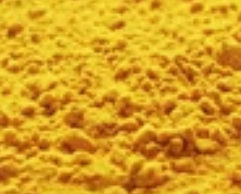| "Descrizione" by Frank123 (12058 pt) | 2023-Apr-27 17:24 |
E1103 (Invertasi) è una glicoproteina, un enzima che si trova in microrganismi e piante ed è prodotto industrialmente dal lievito di birra Saccharomyces cerevisiae dopo purificazione.
Si presenta in forma di polvere gialla o bianca.

A cosa serve e dove si usa
Alimentazione
Ingrediente inserito nella lista degli additivi alimentari europei come E1103 con funzione di regolatore di acidità, stabilizzante. E' utilizzato nella produzione del miele artificiale. Agisce da agente catalitico per ottenere un dolcificante artificiale.
Altri usi
Enzima importante per l'inversione del saccarosio nella preparazione dello zucchero invertito e dello sciroppo ad alto contenuto di fruttosio (1). Partecipa alla produzione di agenti plastificanti che vengono utilizzati nei cosmetici.
Medicina
E' un antiossidante ed un antimicrobico utile nel trattamento della fermentazione intestinale e nel ridurre i disturbi intestinali
- Formula molecolare C2H3NaO2S
- Peso molecolare
- CAS 9001-57-4
- UNII
- EC Number 232-615-7
Bibliografia_____________________________________________________________________
(1) Kulshrestha, S., Tyagi, P., Sindhi, V. and Yadavilli, K.S., 2013. Invertase and its applications–a brief review. Journal of pharmacy research, 7(9), pp.792-797.
Abstract. Invertase, also called beta-fructofuranosidase cleaving the terminal non-reducing beta-fructofuranoside residues, is a glycoprotein with an optimum pH 4.5 and stability at 50 °C. It is widely distributed in the biosphere especially in plants and microorganisms. Saccharomyces cerevisiae commonly called baker's yeast is the chief strain used for the production and purification of the enzyme. Invertase in nature exists in different isoforms. In yeasts, it is present either as extracellular Invertase or intracellular Invertase. In plants, there are three isoforms each differing in biochemical properties and subcellular locations. Invertase in plants is essential not only for metabolism but also help in osmoregulation, development and defence system. In humans, the enzyme acts as an immune booster, as an anti-oxidant, an antiseptic and helpful for bone cancer or stomach cancer patients in some cases. The present study focuses upon the Invertase along with its application and purification from Saccharomyces cerevisiae. Invertase from baker's yeast was purified by concentrating the crude extract with ammonium sulphate (70%), dialyzed using sample buffer (0.1 M Tris, pH 7.2) and followed by centrifugation. The resultant supernatant was then applied on DEAE-cellulose column equilibrated with Tris buffer. The enzyme was eluted with a step gradient of NaCl (0–0.5 M) in starting buffer. Fractions showing highest activity were pooled. The result contains the purification summary with the purification fold of 27.13 and recovery of 31.93%. For the better understanding the mechanism and structure of the purified enzyme characterization is essential.
| Evaluate |

